Blue Whale Watching in Mexico

This Blue Whale
all inclusive
adventure begins when we meet you at the airport in Loreto, Baja California Sur, Mexico. Included are most meals, lodging, transportation around town and of course the whale watching.
The combination blue and gray whale trips involve whale watching on both sides of the Baja Peninsula. The blue whale watching takes place on the Sea of Cortez near the town of Loreto. The Gray whale watching takes place on the Pacific Ocean side of the Peninsula inside an enclosed and protected bay known as Laguna Ojo de Liebre.
Winter Blue Whale watching Schedule
We are currently offering Blue Whale watching in the Gulf of California as part of our Combination Whale watching trips.
Our most popular whale watch tours:
To sign up, simply click here to email us or phone us at 626-512-0877 in the USA
To view guide logs and diaries from past Blue Whale trips click the links below.
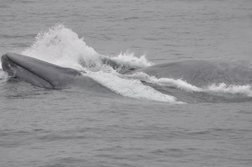
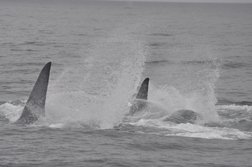
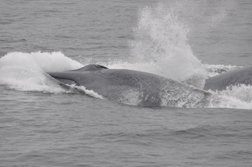
We will see many other animals besides Blue Whales. The Gulf or California is well known for its abundance of marine animal life. Birds, dolphin, several other species of large whale are all likely to be observed on our trip.
During the day we will stop and enjoy a leisurely lunch time picnic on one of the secluded sandy offshore island beaches. There are many interesting animals and things to see during our brief time on shore each day.
Blue Whale Quick facts:
Length: currently up to 90 feet. Before whaling probably up to 120 feet. Weight up to 140 tons, but in the past maybe 20 to 50 tons more than that.
Blue whales are baleen whales, who eat krill and other small pelagic marine animals. They have two blow holes. The heart of an adult blue whale is about the size of VW Beetle. The carotid artery is about 12" to 18" in diameter, compared to 1/4" for humans. The internal temperature is about 98 to 99 degrees fahrenheit. The heart rate at rest is 5 to 10 beats per minute compared to an average human heart rate of 60 or 70 beats.
Blue whales are semi-deep divers going down as deep as 600 feet in search of the 1 to 8 tons of krill they consume in a single day, depending on location and season. The Blue Whale typically dives for periods averaging 5 to 10 minutes.
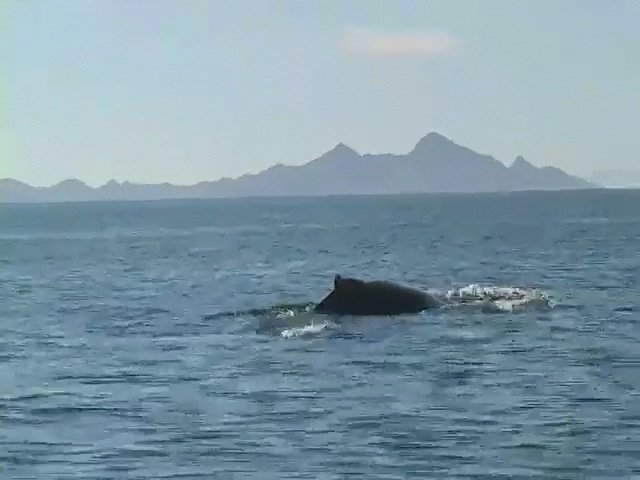
Baby Blue Whales
The baby blue whale weighs about 2.5 tons at birth. This compares to about 1/2 ton (1000 pounds) for a baby gray whale. The baby is nursed on 50% fat enriched mothers milk, consuming about 50 gallons (roughly 400 pounds) a day. The baby will gain 200 to 300 pounds a day in body weight. Current information that I have indicates that Blue whales are known to give birth to twins. This is said to occur in 1 in 100 births.
The largest animal in the world at 100 feet in length and up to 140 tons. With less than 11,000 remaining in the world, few people experience the thrill of seeing them. A baby blue whale is about the size of an adult Gray Whale! We also expect to see many Fin Whales. The 2nd largest animal in the world. At about 70 to 85 feet these are really big animals too. If dolphins get you excited, you will be in for a real thrill should we happen upon a pod of 200 to 1000 dolphins. We also expect to see humpback whales, sperm whales and more. Last year we had wonderful views of a humpback as it dived and swam near us. Part of the adventure on this trip is not knowing just which animal we will come upon next. There are birds by the thousands and fish by the millions. And of course having the opportunity to do some beachcombing while we eat lunch each day on a deserted island is just an added bonus.
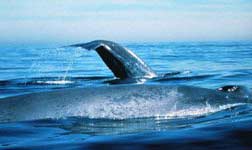
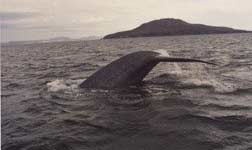
Migration : Blue whales spend the warm summer months feeding in the cold arctic or Pacific waters. They consume one to 8 tons of krill and other small pelagic marine arthropods each day. As the weather turns cold the most large whale species begin migrating south to warmer waters. Humpbacks from the north congregate near islands such as Hawaii. The gray whales migrate south, swimming close to shore, frequently within view of landbased spotters. The Blue whales are solitary animals who swim further offshore. Their migration is not documented, but is known only by observation of the animals who return to certain warm waters year after year. In the Loreto area each year will see a population of 30 to 100 blue whales congregate near the islands just offshore. This is our destination and the reason we can confidently set out to observe this, the most elusive of the large whales.
